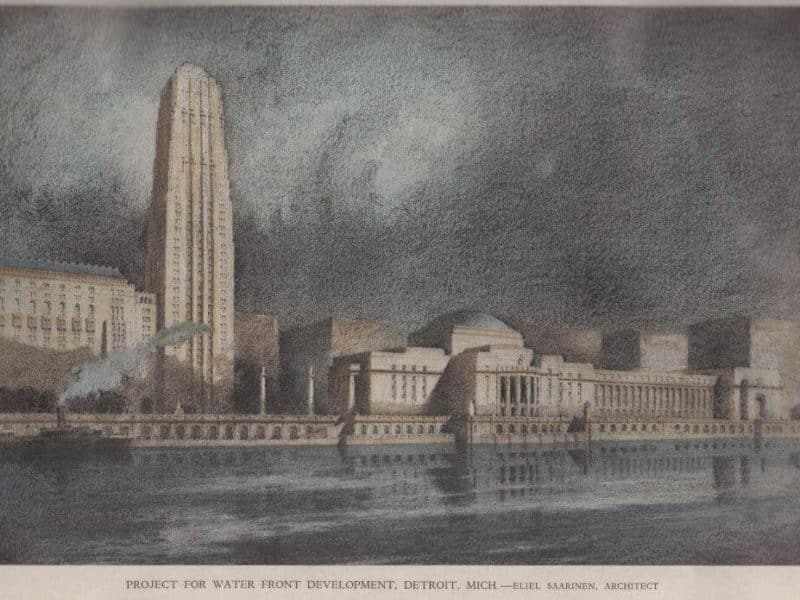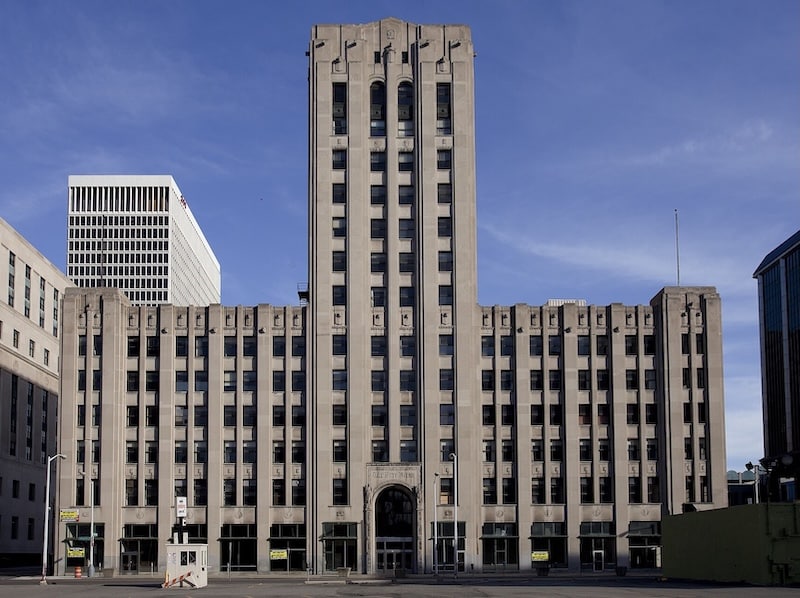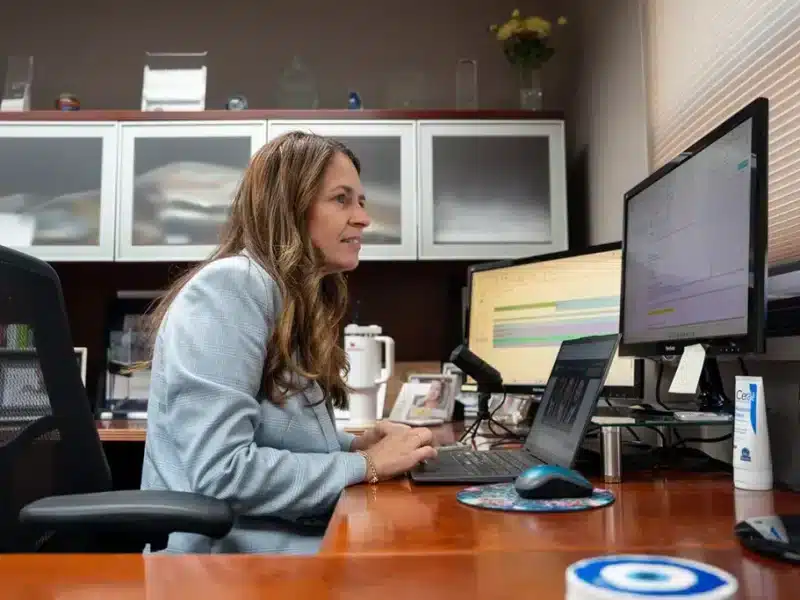Detroit, Torino Duet
The sounds of two post-industrial cities, half a world away, come together in Chris Collins’ Detroit-Torino Jazz Project.
Two products of post-industrial cities, although half a world away, have come together in a creative factory known as the Detroit-Torino Urban Jazz Project.
Composers and performers Chris Collins of Detroit and Emanuele Cisi of Torino, Italy, are forging a global statement on the post-industrial urban experience through a multimedia collaboration.
The project, funded by a grant from Wayne State University, involves creating a composition that fuses visual and audio impressions of the cultures, says Collins, director of Jazz Studies at Wayne State University.
This will not just be a jazz composition performed in clubs and concert stages, he says. “It’s going to be a true, global cultural collaboration; it will not belong to any one side, it will be the result of everyone.”
It started with a sax The idea originated with the two jazz performers, who play the same “obscure, hand-made” saxophones built by the Rampone and Cazzani Company based in Quarna, Italy. Collins and Cisi developed an immediate friendship when the two connected on tour.
The idea originated with the two jazz performers, who play the same “obscure, hand-made” saxophones built by the Rampone and Cazzani Company based in Quarna, Italy. Collins and Cisi developed an immediate friendship when the two connected on tour.
“As we explored ideas for collaboration, it became clear that we both drew inspiration from the physical shape of our urban homes,” says Collins. “Our artistic, emotional, and compositional goals were often guided by the imagery of old and new architecture, city streets and alleys, the stacked communities of apartments and project housing, and the diverse faces and skin colors in every neighborhood.”
At one point they tossed around an idea that their hometowns – manufacturing cities with jazz heritages and post-industrial challenges – had something to say to each other and to the world. That message would become a creative synthesis by the artists.
Technically, the artistic term is synaesthesia, “the union of the senses or the interchangeability of sensory perceptions,” according to Collins. “Synaesthesia can refer to the mind’s ability to hear colors, taste words, or see pain. In the art world it typically refers to a type of multimedia performance presentation, in which aural and visual art forms are blended.”
The two performers have begun spending time experiencing both cities. Eventually, they will perform together in clubs, including a few dates in Detroit in April (see note below).
Beyond the Emerald Isle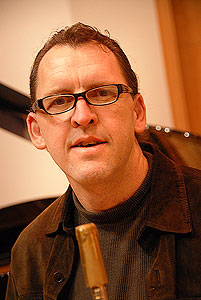 Collins, a native Detroiter and mainstay on the city’s jazz scene, composed and recorded Jazz from the Shamrock Shores, an exploration of his Irish roots through a collaboration with Irish folk musicians. Much of his creative life has been focused on finding his artistic voice within. But after Shamrock Shores, he began to embrace musical ideas from elsewhere.
Collins, a native Detroiter and mainstay on the city’s jazz scene, composed and recorded Jazz from the Shamrock Shores, an exploration of his Irish roots through a collaboration with Irish folk musicians. Much of his creative life has been focused on finding his artistic voice within. But after Shamrock Shores, he began to embrace musical ideas from elsewhere.
“I was seeking to expand myself,” he recalls. The idea of globalization excites Collins. Unlike the often shallow “world music” compositions that incorporate rhythms and melodies from other countries into American songs, Collins sees globalization in music as an opportunity to create entirely new art. “I’m washing my hands of the old stuff … (like) cold water splashed on my face.”
Collins and Cisi were schooled on the same tradition of American jazz. As saxophonists, they speak the language of Charlie Parker, Coleman Hawkins, Sonny Stitt, John Coltrane.
In recent years, however, Italy and its European neighbors have begun redefining jazz through their musical traditions, while American jazz continues to evolve. Collins sees an opportunity to create a convergence of the two through impressions of their home cultures.
“This project, in the end, will not be just about jazz. Jazz is a logical element because it has a lot do with the central artists and both cities,” says Collins. “I want Detroiters to understand that we have a connection with Torino, Italy. It’s the ‘Detroit of Europe.’ It’s a manufacturing city, home to the Italian automaker Fiat. … These are people who are experiencing some of the same ups and downs that we have in Detroit.”
Torino connection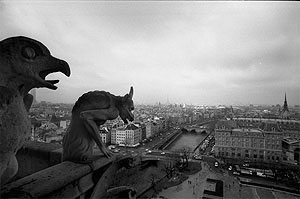 Home to the 2006 Winter Olympics and the 2008 European Design Center, Torino has experienced an urban renaissance somewhat greater than Detroit.
Home to the 2006 Winter Olympics and the 2008 European Design Center, Torino has experienced an urban renaissance somewhat greater than Detroit.
“In my vision,” Cisi says, “jazz music, with its peculiarity of mixed cultural art forms, can be a perfect unifying conveyance — a sort of bridge between old and new — always including in itself elements of tradition and innovation, and, possibly better than others art forms, illustrate and describe the story and the transformations through the years.”
Between 1950 and 1970, Italians migrated to Torino, located in the north of Italy. While Italy didn’t have the international immigration of Detroit, “the mix of social and cultural influences contributed to the creation of new perspectives at all levels in everyday life and in artistic conceptions,” Cisi says. “The parallel between Torino and Detroit, with jazz music as a conductor, should reveal interesting and unusual similarity, displaying different or common approaches to the transformation from industrial to ‘new’ cities.”
How Motown sounds
Detroit, says Collins, has the energy and dynamism of a world community, rich in diversity, however polarized. “Detroit is an amazingly unique city in its construction, in its people, in its history; the level of success and failure in this city is quite unique.”
Musically, Detroit’s Motown soul and jazz traditions “fuel” creative and popular music, “products of the cultures, tensions, leaders, lifestyles, environs, and values unique to the Detroit region,” Collins says.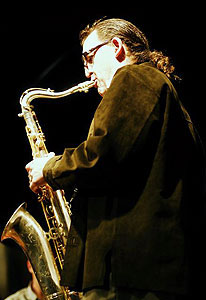 “As jazz music has played an important role in the art culture of both cities, it serves as an optimum foundation for artistic representation and multi-cultural communication,” explains Collins.
“As jazz music has played an important role in the art culture of both cities, it serves as an optimum foundation for artistic representation and multi-cultural communication,” explains Collins.
The Detroit-Torino collaboration represents the challenge and opportunity of diversity: making connections between similar and opposite people.
Why are the connections so important?
“It’s what binds us together as human beings. To me, it’s the place we’re moving to as a global culture,” Collins says. “I don’t see globalization as an attempt to bring both places to the same place artistically. It’s about celebrating the commonalties and the differences.”
The Rappone and Cazzani Company is sponsoring the Detroit-Torino Urban Jazz Project at the 28th season of the “Quarna Un Paese Per La Musica” festival, a European tour beginning March 12. The company has offered continued corporate sponsorship following the recording of the projects, Collins says.
The collaboration will continue in Detroit at April 21 at Wayne State, April 22 at the Music Hall Jazz Cafe, and April 25 at Baker’s Keyboard Lounge. An initial performance of the final work will be held at the Max M. Fisher Music Center, tba.
Collins says that proposals have been submitted to the organizers of the Detroit and Torino jazz festivals to perform the work with Cisi, together with the visual component, this year. A CD and DVD are to follow.
A web site is under construction, but check back to www.DetroitTorino.com for updates.
Photos:
Chris Collins, Copyright Dave Krieger
Emanuele Cisi, Copyright Stefano Lanzardo
Chris Collins, Copyright Dave Krieger
Turino, Italy, Copyright Piero Ottaviano
Chris Collins Playing Live, Courtesy Chris Collins
